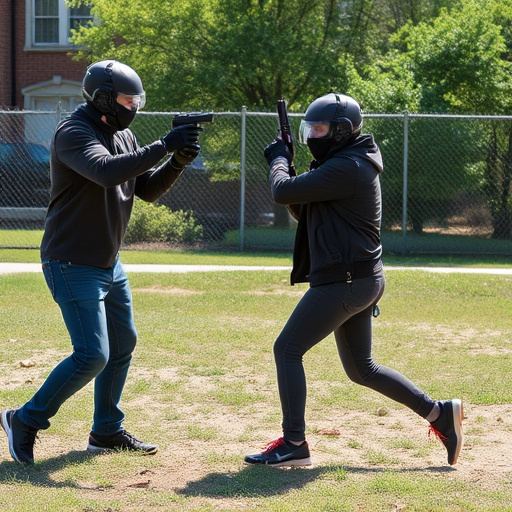Non-lethal self-defense stun weapons, including projectile stun guns and contact devices like tasers, offer individuals powerful yet safe options for personal protection. Projectiles are ideal for disabling assailants from a distance, while contacts weapons excel in close quarters combat. Legal regulations vary widely, so understanding local laws and device types is crucial. The best choice considers ease of use, versatility, legal aspects, and personal needs, ensuring preparedness against unexpected threats.
In the realm of personal safety, understanding the dynamics of non-lethal self-defense is paramount. This article explores the nuances between projectile and contact stun weapons, two distinct approaches to neutralizing threats quickly and effectively. From the range and precision of projectile stun guns to the direct impact of contact devices, each has its unique advantages. We’ll navigate legal considerations and guide you in choosing the right stun weapon for personal safety, ensuring you’re prepared for unforeseen circumstances.
- Understanding Non-Lethal Self-Defense: The Need for Stun Weapons
- Projectile Stun Guns: Range and Precision in Action
- Contact Stun Devices: Direct Impact for Immediate Disarmament
- Legal Considerations: When and Where Can You Use Stun Weapons?
- Choosing the Right Stun Weapon: Factors to Consider for Personal Safety
Understanding Non-Lethal Self-Defense: The Need for Stun Weapons
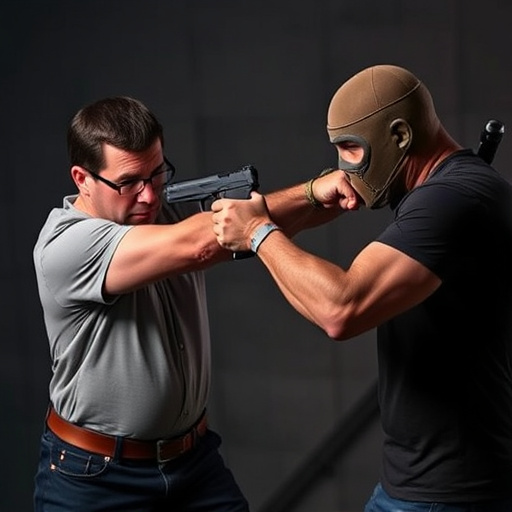
In the realm of personal safety, understanding non-lethal self-defense options is paramount, especially when considering stun weapons as a last resort. These devices are designed to incapacitate an assailant temporarily without causing permanent harm or death, making them valuable tools for individuals seeking to protect themselves in various situations. Stun guns, tasers, and other similar devices emit an electric current that disrupts muscle control, leaving the target stunned and unable to pose a threat for a brief period. This concept of non-lethal force is crucial, as it provides a middle ground between the use of deadly force and doing nothing in the face of danger.
The need for non-lethal self-defense tools has grown, especially with the rise in personal security awareness. Stun weapons offer individuals a sense of empowerment, knowing they can defend themselves effectively while minimizing the risk of severe injury or death. As such, these devices are becoming increasingly popular among those who prioritize their safety and well-being, providing a practical solution for navigating potentially dangerous encounters without resorting to lethal force.
Projectile Stun Guns: Range and Precision in Action
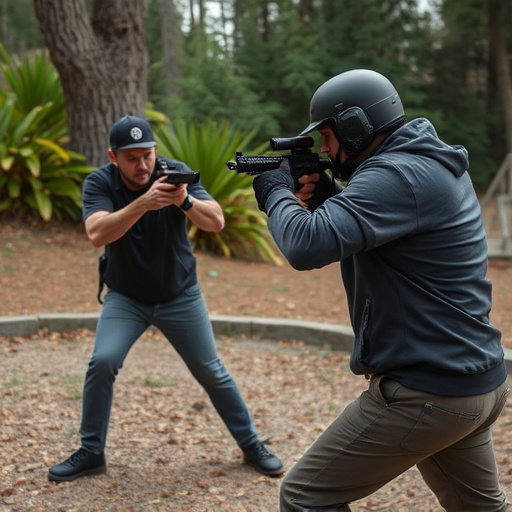
Projectile stun guns, also known as non-lethal self-defense weapons, offer a unique approach to personal safety by utilizing precision and range. Unlike traditional contact stun devices that require direct contact with the target, projectile stun guns fire projectiles imbued with a high voltage charge. This technology allows users to disable assailants from a distance, providing a crucial advantage in scenarios where close quarters combat may be avoided or difficult.
The range and precision of these weapons are significant advantages for self-defense situations. They enable individuals to incapacitate attackers without the need for direct physical interaction, making them ideal for high-risk environments or situations where de-escalation is paramount. With accurate shots, users can temporarily paralyze an assailant’s muscles, rendering them unable to continue attacking, thus providing a safe escape or the opportunity to call for help.
Contact Stun Devices: Direct Impact for Immediate Disarmament

Contact stun devices, also known as tactical electric shields or stun batons, are designed for close-quarters combat and non-lethal self-defense. These weapons use electrical current to temporarily incapacitate a target through direct physical contact. When deployed, the device makes contact with an aggressor, delivering a powerful jolt that disrupts muscle control, causing the individual to drop their weapon or become momentarily incapacitated. This immediate disarmament aspect is crucial in high-risk situations, providing a safe resolution without resorting to lethal force.
Unlike projectile stun weapons, which rely on distance and impact velocity, contact stun devices offer a more direct and controlled approach. They are versatile tools for law enforcement and individuals seeking effective non-lethal self-defense options. The ability to incapacitate an attacker through physical interaction gives users a sense of empowerment and control in potentially dangerous encounters.
Legal Considerations: When and Where Can You Use Stun Weapons?
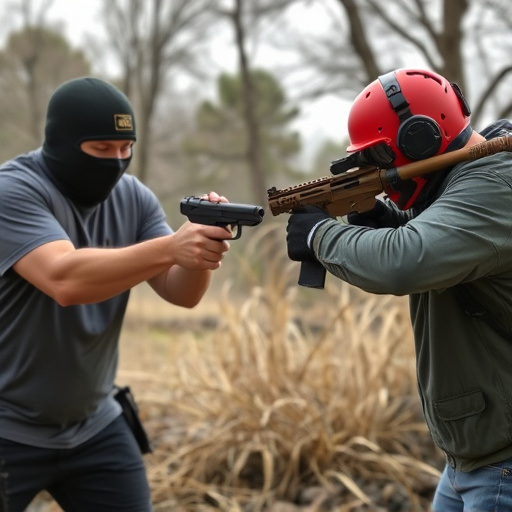
Legal considerations play a crucial role in determining when and where non-lethal self-defense stun weapons can be used. The legality of stun guns varies significantly across different countries and regions, with some permitting their use only for law enforcement purposes while others allow civilians to carry them for personal protection. In many jurisdictions, these devices are classified as firearms, subject to strict regulations and licensing requirements.
Understanding the local laws is essential before purchasing or carrying a stun weapon. Certain areas have specific restrictions on the type of stun device allowed, power output limits, and places where they can be carried (e.g., public spaces, schools, workplaces). Users must ensure they are not violating any laws to avoid legal repercussions, fines, or even criminal charges.
Choosing the Right Stun Weapon: Factors to Consider for Personal Safety
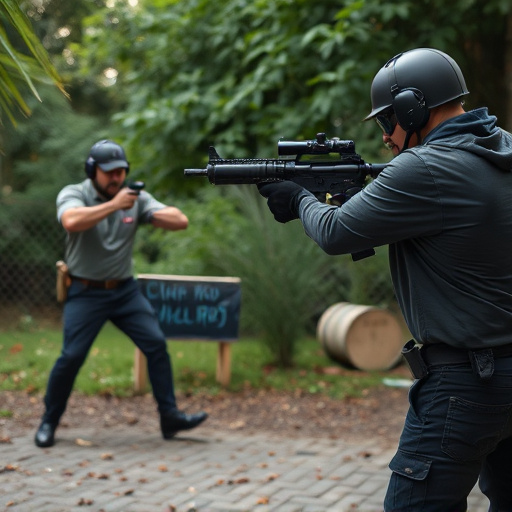
When selecting a stun weapon for personal safety, several factors come into play. It’s crucial to understand the difference between projectile and contact stun weapons. Projectile weapons, such as stun guns or tasers, fire electric charges over a distance, temporarily incapacitating the target. They’re ideal for self-defense in public spaces where accuracy at a distance is crucial. However, their range is limited, and close-quarters encounters may require alternative options.
On the other hand, contact stun weapons like electroshock vest or batons deliver an electric shock upon direct contact with the target. These are more versatile for personal safety as they can be used in any situation where physical contact is possible. They’re excellent for close-range scenarios and can even deter aggressive dogs. Choosing the right weapon should also consider factors like ease of use, reliability, legal considerations, and personal comfort, ensuring you’re prepared for any unexpected situation with a non-lethal self-defense stun weapon.
In conclusion, both projectile and contact stun weapons offer unique advantages in non-lethal self-defense scenarios. Projectile guns provide a safe, effective range for neutralizing threats while preserving the ability to defend oneself at a distance. Contact devices, on the other hand, deliver immediate disarmament through direct impact, ideal for close-quarters encounters. When choosing a stun weapon, consider factors like power, size, and legal restrictions in your jurisdiction to ensure you’re prepared for any situation while adhering to local laws.
